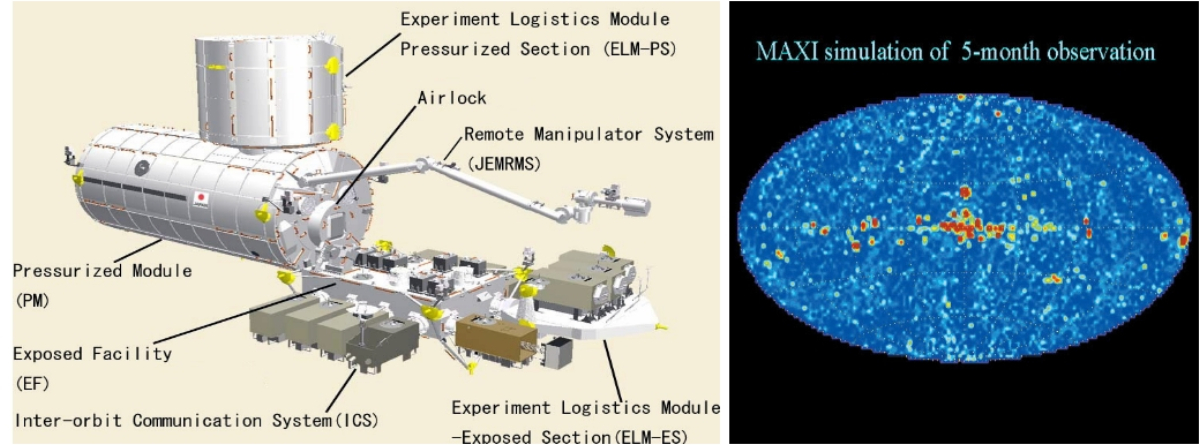
 Credit: left: NASDA; right: JAXA
Credit: left: NASDA; right: JAXA
Hope for the ISS
One of the main objectives of the STS 127 mission is the installation of Japan's first human space facility on the International Space Station. This facility, called "Kibo" (Japanese for hope) allows astronauts to perform experiments focussed on space medicine, biology, Earth observations, material production, biotechnology and communications research. Kibo consists of two research facilities -- the Pressurized Module which allows astronauts to directly perform experiments within it, and the Exposed Facility, which allows astronauts to mount experiments exposed to the vacuum of space. The image above left shows an artist's conception of Kibo, showing the Pressurized Module and the Exposed Facility. One of the first experiments to be mounted on the Exposed Facility is MAXI, the Monitor of All-sky X-ray Image. MAXI is an All-sky X-ray scanner, which consists of X-ray slit cameras with high sensitivity. MAXI will continuously monitor astronomical X-ray objects over the broad energy range 0.5 to 30 keV. The image on the right shows a simulation of a 5-month scan of the entire high-energy sky with MAXI.
Published: July 20, 2009
<
HEA Dictionary ● Archive
● Search HEAPOW
● Other Languages
● HEAPOW on Facebook
● Download all Images
● Education ● HEAD
>
Each week the HEASARC
brings you new, exciting and beautiful images from X-ray and Gamma ray
astronomy. Check back each week and be sure to check out the HEAPOW archive!
Page Author: Dr. Michael F. Corcoran
Last modified Tuesday, 27-Feb-2024 10:13:28 EST


